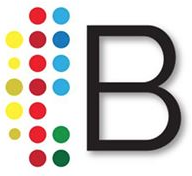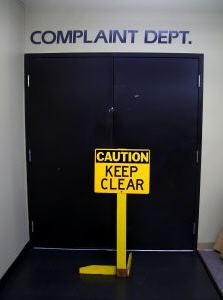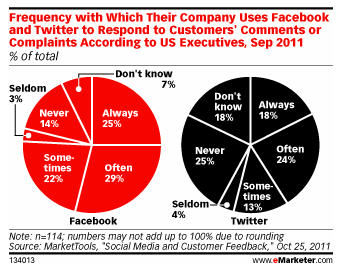Everyone has seen the vents and rants on Facebook and Twitter but do customers really expect companies to respond? Are companies using these venues to answer complaints? eMarketer's recent articles When Consumers Tweet Complaints, Should Brands Respond? and How well Do Companies Respond to Complaints? look at the bigger picture of social media and marketing and how complaints online are being addressed or not. "According to customer experience research company Maritz Research, nearly half of consumers who tweeted a complaint directed toward a brand expected the company to respond—or at least to read their tweet. However, only a third of those consumers received a tweeted response from the mentioned brand." Interestingly, older customers 55+ expect a company to address their online complaints everytime. Younger customers and those more active on Twitter believed that companies would not respond. It seems they have they have lowered their expectations based on experience.
Companies should be paying more attention to their social media outlets and answering questions and complaints more often. "Consumers are overwhelmingly positive when brands take the time to actually respond to them on Twitter. The Maritz study indicates that 86% of Twitter complainers would have liked or loved to hear from the company regarding their complaints—and out of those who heard back, 75% were satisfied with the company’s response."
Obviously, complaints can help the company improve service but companies are also discovering that participating in this type of online conversation can help build relationships with customers. For instance Virgin Airlines tries to respond to every question or complaint tweet @VirginAmerica. Abby Lunardini, vice president of corporate communications, told eMarketer in a September 26, 2011, interview that customers were surprised to learn that someone in the airline industry was listening and responding to the online chatter and she believes that the engagement is improving service and leading to customer loyalty with more customers choosing to fly Virgin Airlines again.









